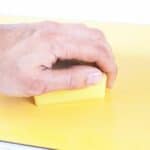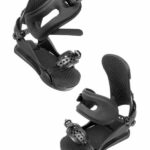Whenever I am done snowboarding and enjoying the winter weather for the year, I always unload and pack away my gear properly for safekeeping.
Knowing how to store snowboard gear as well as your snowboard itself during the off-season is a must for any outdoor enthusiast.
Knowing how to store snowboard bases and equipment properly can help to extend the lifespan of your gear while ensuring the quality does not diminish in less time.
Table of Contents
How to Store Snowboard
Typically, storing a snowboard is not labor-intensive or straining, as it only requires a few steps. From removing the bindings of your snowboard to wiping and waxing the base, storing your snowboard should take less than an hour from start to finish.
Remove the Bindings From the Snowboard
One of the first steps I take, whenever I am storing my snowboard for the summer months, is removing my board’s bindings.
Removing the bindings from your snowboard is possible with a traditional screwdriver in most instances. You can quickly remove bindings with a screwdriver by loosening the attached bolts.
After you have removed the bindings from your snowboard, it is advisable to look over the board itself as well as the quality of the bindings and bolts you are using.
Inspect the top sheet of the board for wear and tear as well as for any cracks that may lead to more serious or costly issues in the future if left unattended.
Inspect Your Snowboard
After you have successfully removed the bindings from your snowboard, take the time to thoroughly inspect the board itself as well as the bindings, bolts, and equipment you use while snowboarding.
You can also use a gummy stone to help with eliminating burrs and other ridged edges that have accumulated on your board or gear while in use.
While inspecting the board, spend time rounding and sharpening your snowboard’s edges, which will help you to remain as aerodynamic as possible whenever you hit the snow.
Wipe the Base of Your Snowboard
While it is not always necessary, anyone who snowboards knows the importance of keeping a clean base, especially during the off-season.
Whenever I am planning to put my snowboard away for the warmer months, I take time to wipe my board down thoroughly and with the right solution.
Usually, using a citrus-based cleaner that is ideal for snowboards is best, as it will help to remove dirt buildup and debris from your board without affecting the shine and quality of the board.
You can typically use a soft cloth or fabric rag with a safe citrus-based cleaner to scrub and wipe your board down.
Oftentimes, a traditional cleaner works well with dirt, debris, grass, and even sap which may accumulate on and around the base of your board over time.
Waxing the Base of Your Snowboard
Those who snowboard recreationally and as a hobby may not be familiar with the process of waxing their boards, but it is a quintessential part of snowboarding for those who are serious about the sport.
Repairing, tuning, and waxing a snowboard is one of the most fundamental elements of snowboarding, especially when doing so for sport and for skill.
Using all-temp wax and iron, smooth your snowboard prior to storing it away for any period of time.
Leaving a layer of wax on top of your snowboard is highly advisable if you do not intend to use the board regularly for at least a month.
By placing an entire layer of wax onto your board, you eliminate the risk of having your board oxidize throughout the hottest months of the year. A layer of wax is essentially a protective layer for your board, even in the harshest of conditions.
If you are serious about snowboarding, take the time to learn more about the waxing and tuning process of snowboarding.
Not all snowboards require the same wax and tuning process, which is why researching for individual boards is highly advisable before you get started yourself.
Store the Snowboard
Once you have finalized the removal of the bindings, the inspection, and the waxing of your snowboard, it is time to place it away in storage.
As with most gear and sporting equipment, it is best to store a snowboard in an environment that is not too hot, nor too cool.
A dry, cooler area is best to avoid overheating and/or warping the snowboard. If a board is left outdoors in a garage, shed, or even in a barn, you may discover that the board’s foundation is warped and not in the same condition once winter arrives again.
Some tips to keep in mind when storing your snowboard include:
- Ensure that your snowboard’s top layer is completely covered in a layer of wax for maximum protection.
- Use a sporting goods bag or the original storage bag for your snowboard to protect your board year-round.
- Avoid placing your snowboard in the hot heat or in extremely cold temperatures. Opt for a cool, dark place that will mostly go undisturbed while your snowboard is not in use.
Frequently Asked Questions about How to Store Snowboard
What tools do I need to store my snowboard?
To get started, you will simply need a standard screwdriver, all-temperature wax, and in some cases, a storage bag. Some snowboards may require that you use a specific type of screwdriver or an Allen wrench to help remove bindings, depending on your make and model.
What if I do not want to remove the bindings from my snowboard before storing it?
Keeping the bindings on your snowboard prior to cleaning it can cause you to miss out on debris which may lead to clogs and other gear-related issues. Leaving the bindings on your snowboard year-round can lead to quicker rusting of the board and bindings themselves, leading to cracking and/or breakage.
Do I need to wax my snowboard?
Waxing isn’t always necessary. However, a snowboard stored for extended periods of time without a layer of wax is more susceptible to oxidation and/or warping.
What’s the recommended snowboard cleaning frequency?
Snowboard cleaning frequency greatly depends on the usage and the terrain you explore. Those who use their snowboards every week in treacherous areas should clean their boards at least 1-2x monthly.




